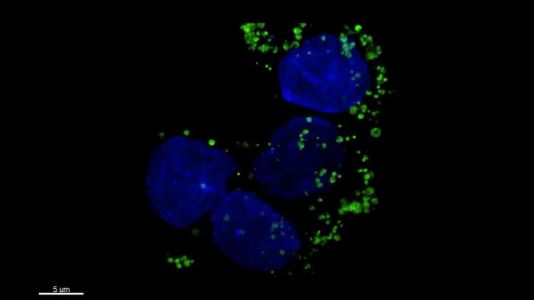
View video on Instagram
Getting therapeutics to slip inside a tumor cell is tricky business. Therapeutics can be bulky, need to be precision-targeted and cells tend to spit them out rather quickly.
Researchers at Johns Hopkins have developed a nanodrug that assembles into a therapy once it's inside the tumor cell. And they can track whether it's working in cells too. They used an anti-inflammatory drug called olsalazine, which has shown an ability to kill cancer cells, and connected it to a peptide that helps the drug slip inside cancer cells that contain an enzyme called furin. Once inside the cell, furin unzips the drug from the peptide that paved its way into the cell. Then, other molecules glom onto the drug, transforming it into a nanoparticle that has the right amount and type of electromagnetic properties that can be detected by an MRI machine. The nanodrug stays for several hours inside the cancer cell before the cell dies or it's washed out. The green dots in this image are the nanodrugs that have entered human colon cancer cells and moved toward blue-dyed nuclei.
